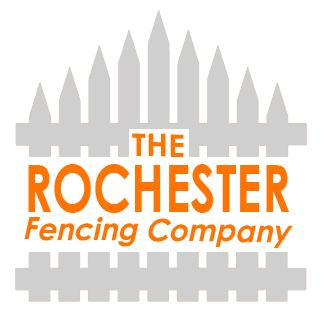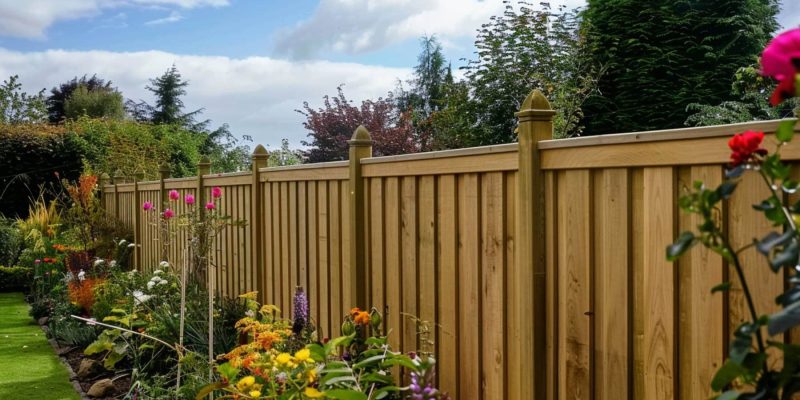Ever wondered if your garden fence is protected under your house insurance? You’re not alone. Many of us cherish our garden fences for privacy and beauty, but confusion often arises regarding insurance coverage. This post will guide you through the ins and outs of garden fence coverage, ensuring you’re well-informed and ready for any situation. Let’s dive in!
Understanding Homeowner’s Insurance Coverage
Homeowner’s insurance is like a safety net for your home. Imagine if something bad, like a fire or a storm, happens to your house. This insurance helps pay for the damages so you don’t have to cover all the costs yourself. It’s a package that generally takes care of four big areas:
- Dwelling: This part covers your main house.
- Other Structures: Here’s where garden fences usually fit in. It covers things not attached to your house, like sheds or, you guessed it, fences.
- Personal Property: This covers stuff inside your house, like furniture or TVs, if they get damaged or stolen.
- Liability: If someone gets hurt on your property, this helps cover their medical bills or your legal fees if needed.
Most policies will protect you against common problems like fires, storms, and theft. But, it’s super important to chat with your insurance company to know exactly what your policy covers. Not all insurance policies are the same, and some might not cover everything you think they do.
Not all insurance policies are the same, and some might not cover everything…
Knowing what’s covered can save you a lot of headaches later. It’s like knowing what’s in your backpack before a big hike. You wouldn’t want to find out you left your water bottle behind when you’re already thirsty, right? So, getting to know your homeowner’s insurance policy is key to making sure your garden fence, and the rest of your home, has the right protection.
Garden Fences and Homeowner’s Insurance: The Basics
When it comes to garden fences, they’re usually covered under the “Other Structures” part of your homeowner’s insurance. This means if your fence gets damaged by something like a storm or vandalism, your insurance might help pay to fix or replace it. But, there are a couple of things you need to know.
First, what exactly does your insurance cover? Most times, it covers damage from stuff like storms, fires, and vandalism. But, if your fence gets old and falls because it wasn’t taken care of, that might not be covered. Insurance usually helps with sudden, unexpected damages, not things that happen slowly over time.
Second, there are two main types of coverage you’ll hear about: “named perils” and “all risks.” Named perils means your insurance only covers specific situations listed in your policy. If it’s not on the list, it’s not covered. All-risks coverage is broader. It can help with most types of damage, except for things your policy says it won’t cover. Knowing which one you have can help you understand how protected your garden fence really is.
So, when you’re looking at your insurance policy, check to see what types of damage are covered and if there are any limits on how much money the insurance company will give you for fence repairs or replacement. This way, you’ll have a clearer picture of how your garden fence fits into your overall home protection plan. Remember, being informed is your best defense against surprises, so don’t hesitate to ask your insurance agent about the specifics of your fence coverage.
Common Issues and Questions About Fence Coverage
When it comes to garden fences and insurance, homeowners often have a bunch of questions. Let’s tackle some of the most common ones to clear up any confusion.
How much coverage do I have for my fence?
Your insurance policy sets a limit on how much money you can get to fix or replace structures like fences. This is often a percentage of your total policy. For example, if your home is insured for $200,000 and your policy offers 10% coverage for other structures, you’d have up to $20,000 for repairs or replacements, including your fence.
What if my fence is damaged by something not covered?
Sometimes, things like floods or earthquakes damage fences, and these are not always covered by standard homeowner’s insurance. If you’re in an area where these are common, you might need extra insurance, like flood insurance, to make sure your fence is protected.
Does it matter how the damage happened?
Yes, it does. If your fence was damaged because of something sudden and unexpected, like a tree falling on it during a storm, insurance likely has you covered. But if the damage is due to lack of maintenance or normal wear and tear, you might be out of luck. That’s why it’s important to take good care of your fence and keep it in good shape.
What about sharing a fence with a neighbor?
This can get a bit tricky. If a shared fence is damaged, the cost might be split between you and your neighbor’s insurance policies. It’s a good idea to chat with your neighbor and insurance company to figure out how this works before any issues pop up.
Understanding these aspects of fence coverage can save you time and stress. If you have more questions, don’t hesitate to reach out to your insurance agent. They can provide you with specific details about your policy and how it applies to your garden fence. Being proactive and informed means you’re better prepared to handle any situation that comes your way.
Tips for Ensuring Your Garden Fence is Covered
To make sure your garden fence has the protection it needs, follow these practical tips:
Review Your Policy Regularly
Things change, and so do your insurance needs. Make it a habit to review your policy every year or after major life changes. This helps ensure your coverage matches your current situation, including any new additions to your garden.
Keep Your Fence in Good Condition
Regular maintenance can prevent many types of damage. Fix loose boards, paint or seal wood to prevent rot, and check for signs of wear and tear. Documenting these efforts can be helpful if you ever need to file a claim.
Document Everything
Take photos of your fence in its best condition and keep receipts for any repairs or improvements. This documentation can be invaluable in proving the value and condition of your fence if it’s damaged.
Understand Your Coverage
Know the difference between “named perils” and “all-risks” in your policy, and adjust your coverage if needed. If you’re unsure about what your policy covers, ask your insurance agent for clarification.
Consider Extra Coverage if Needed
If you live in an area prone to natural disasters not covered by your standard policy (like floods or earthquakes), consider additional insurance to ensure your fence is covered against these events.
By following these tips, you can help ensure that your garden fence is adequately protected by your homeowner’s insurance. Staying informed and proactive is the key to securing the right coverage for your property.
Navigating the Claims Process: A Step-by-Step Guide
If your garden fence has been damaged and you believe it’s covered by your homeowner’s insurance, follow these steps to navigate the claims process smoothly:
- Assess the Damage: Before you do anything else, safely check how much damage your fence has incurred. This will help you understand the extent of the problem when you talk to your insurance company.
- Document the Damage: Take clear, detailed photos or videos of all the damage. This visual evidence is crucial for your insurance claim. If you have before photos from your maintenance records, those will be helpful, too.
- Review Your Policy: Quickly go over your insurance policy to remind yourself of what’s covered and what your deductible is. This will prepare you for the next steps and discussions with your insurance agent.
- Report the Claim: Contact your insurance company as soon as possible to report the damage. The sooner you report, the sooner they can start the claims process.
- Fill Out Claim Forms: Your insurance company will likely require you to fill out some forms detailing the damage and the claim. Fill these out accurately and completely to avoid delays.
- Work with the Insurance Adjuster: An adjuster will be assigned to your claim to assess the damage and determine the payout. Provide them with all the documentation you’ve gathered to support your claim.
- Get Repair Estimates: While waiting for the adjuster, you might be asked to get estimates for the repair or replacement of your fence from licensed contractors. This can help expedite the process.
- Follow Up: Keep in touch with your insurance company throughout the process to ensure your claim is moving forward. Don’t hesitate to ask questions if anything is unclear.
NOTE
Navigating the claims process can be straightforward if you’re prepared and organized. Remember, your insurance company is there to help you through this, so use them as a resource.
Enhancing Your Coverage: Additional Policies and Endorsements
Sometimes, your basic homeowner’s insurance might not cover everything you need for your garden fence, especially if you live in an area prone to certain natural disasters like floods or earthquakes that aren’t covered by standard policies. Here’s how you can enhance your fence coverage:
Additional Policies
For risks not covered by your homeowner’s insurance, such as floods or earthquakes, consider purchasing additional policies specifically for these perils. This can ensure your garden fence is protected against more types of damage.
Endorsements
An endorsement is an addition to your existing homeowner’s insurance policy that provides extra coverage or modifies your policy to cover specific items or conditions. Ask your insurance agent about endorsements that can extend coverage for your garden fence, especially if you’ve made significant upgrades or live in a high-risk area.
Review Limits and Deductibles
Make sure the coverage limits for “other structures” like your fence are sufficient for your needs. If not, discuss increasing these limits with your insurance provider. Similarly, consider if your deductible—the amount you pay out of pocket before insurance kicks in—is appropriate for your financial situation.
Enhancing your coverage through additional policies or endorsements can give you peace of mind knowing that your garden fence is well-protected. It’s worth the extra effort to review your options and make adjustments to your insurance coverage as needed.
Conclusion
Navigating the ins and outs of homeowner’s insurance for garden fences doesn’t have to be complicated. By understanding your coverage, maintaining your fence, documenting everything, and knowing how to file a claim, you’re well on your way to protecting your property. Remember, a well-informed homeowner is a well-protected homeowner. Review your policy today and ensure your garden fence is covered.

